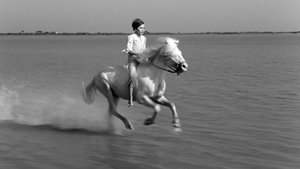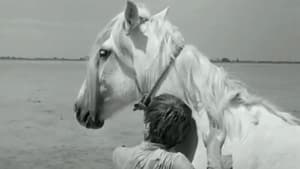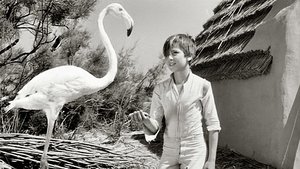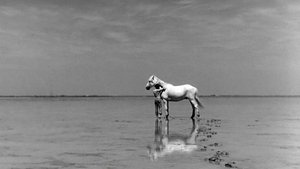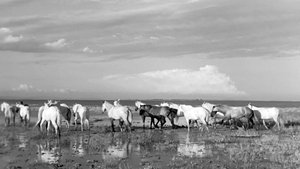Video Sources 0 Views
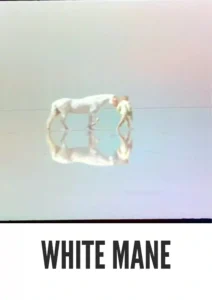
Synopsis

Embark on a visual journey with White Mane, a profoundly moving film from 1953, now exquisitely colorized to enhance its timeless beauty and emotional resonance. Directed by Albert Lamorisse, this poetic drama tells the story of a young boy’s unbreakable bond with a wild, untamable stallion. Perfect for families, cinephiles, and anyone who appreciates a heartwarming tale of friendship and freedom, this HD download offers a unique cinematic experience that transcends generations. Discover why this classic has captivated audiences for decades and immerse yourself in its stunning landscapes and powerful narrative.
White Mane tells the story of a young boy named Folco who lives in the Camargue region of Southern France. Folco forms a deep connection with a magnificent white stallion, leader of the wild horses, whom the locals call “White Mane.” The film portrays the efforts of cowboys to capture White Mane, but the horse fiercely resists domestication.
Folco, understanding the horse’s spirit, dedicates himself to protecting White Mane from those who seek to capture and tame him. Their bond deepens as they share adventures, evading capture together. The film beautifully captures the themes of freedom, innocence, and the relationship between humans and nature. In a climactic and poignant ending, Folco and White Mane choose freedom together, running into the sea and disappearing, symbolizing an escape from the constraints of the human world. White Mane is a touching and visually stunning story that resonates with audiences of all ages, celebrating the beauty of untamed nature and the strength of true friendship.
White Mane features a cast of non-professional actors, adding to the film’s authentic and natural feel:
-
Alain Emery as Folco
-
The wild horse as White Mane
White Mane falls into the genre of poetic drama, with elements of adventure and family film. Its lyrical storytelling, stunning visuals, and heartwarming themes make it a unique and enduring piece of cinema.
Released in 1953, White Mane is a notable example of French cinema’s poetic realism, a style that emphasizes lyrical imagery, emotional depth, and social commentary. Albert Lamorisse’s film stands out for its stunning cinematography and its focus on the beauty of the natural world. During the post-war era, films like White Mane offered audiences a sense of hope and escapism, celebrating the resilience of the human spirit and the power of nature. Although less known than some of its contemporaries, White Mane remains a significant work in the history of French cinema, influencing filmmakers with its visual style and thematic depth.
This colorized version of White Mane has been carefully restored using cutting-edge digital technology, enhancing the film’s visual impact while preserving its original charm and emotional power. The colorization process involved a meticulous analysis of the original black and white footage, with colors chosen to complement the natural landscapes and the characters’ emotions. Sophisticated algorithms were employed to ensure a seamless and authentic color palette. The colorized version brings new life to the stunning scenery of the Camargue region, making the story even more captivating for contemporary viewers. While debates about colorizing classic films continue, this version of White Mane aims to introduce the film to a wider audience, ensuring its legacy for future generations and offering a fresh perspective on a beloved classic.
-
: Albert Lamorisse
-
: Albert Lamorisse
-
: Edmond Séchan
-
: Georges Alepee
-
: Films Montsouris
-
: Films Radius (France)
-
: 40 minutes
-
: MP4
-
: HD (1080p)
-
: Compatible with most devices, including smartphones, tablets, computers, and smart TVs.
White Mane (1953) is celebrated for its poetic storytelling, stunning visuals, and heartwarming themes. The film has received numerous awards and accolades, cementing its place as a classic of children’s cinema and a significant work in French film history. Critics have praised its beautiful cinematography, its powerful message of freedom and friendship, and its ability to resonate with audiences of all ages. As a timeless tale of a boy and a horse, White Mane continues to enchant viewers with its simple yet profound narrative.
-
: What is White Mane about?
-
A: White Mane tells the story of a young boy’s friendship with a wild white stallion in the Camargue region of France.
-
-
: Is White Mane (1953) a well-known film?
-
A: While not as widely known as some other classics, White Mane is highly regarded for its poetic storytelling and beautiful visuals.
-
-
: Is this version of White Mane colorized?
-
A: Yes, this version has been professionally colorized to enhance the viewing experience.
-
-
: What makes White Mane special?
-
A: White Mane is special for its heartwarming story, its stunning cinematography, and its universal themes of freedom and friendship.
-
-
: What is the download format?
-
A: The download format is MP4, which is compatible with most devices.
-
-
: What resolution is the download?
-
A: The resolution is HD (1080p), providing a high-quality viewing experience.
-
Watch White Mane Today!
